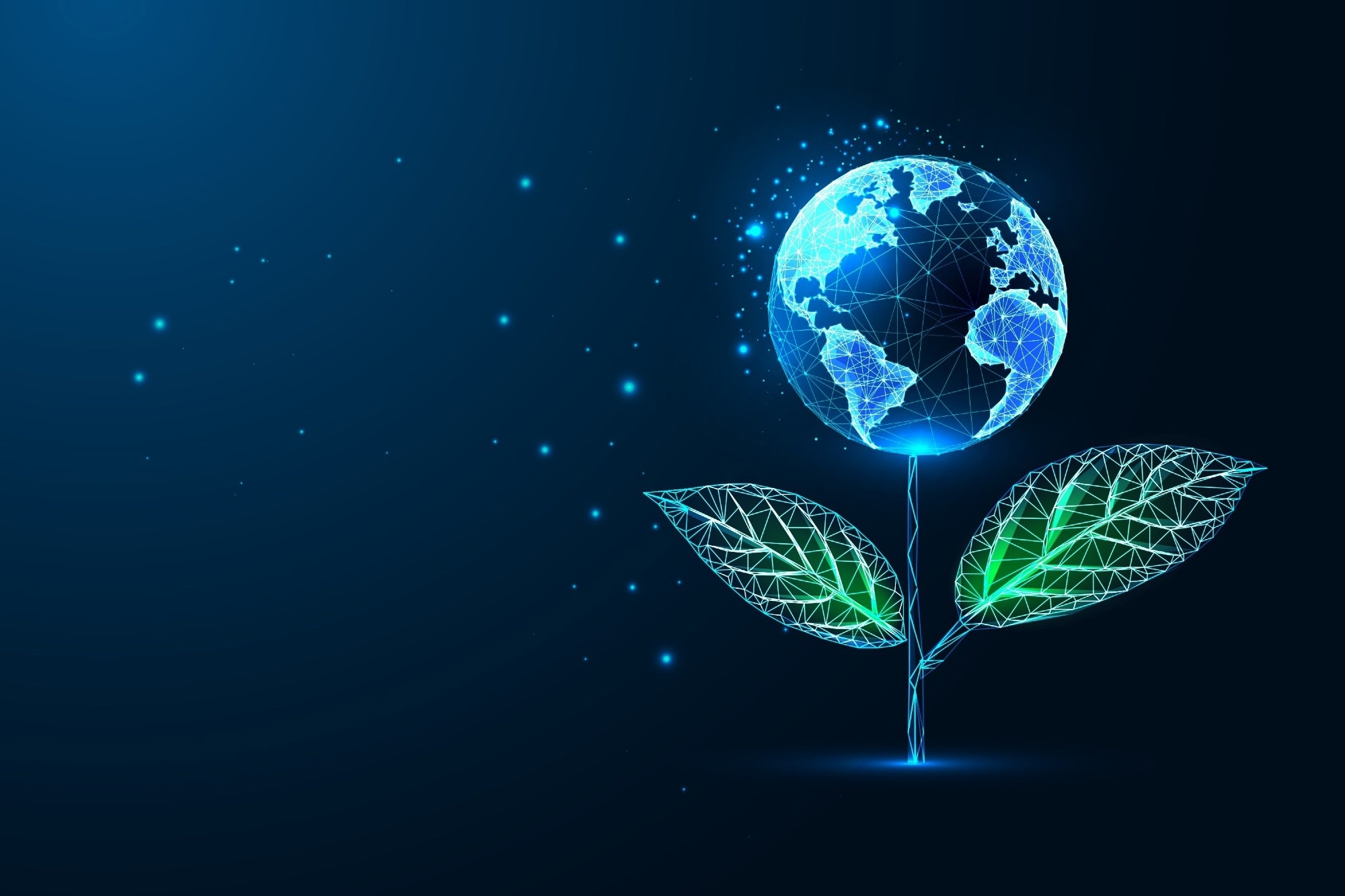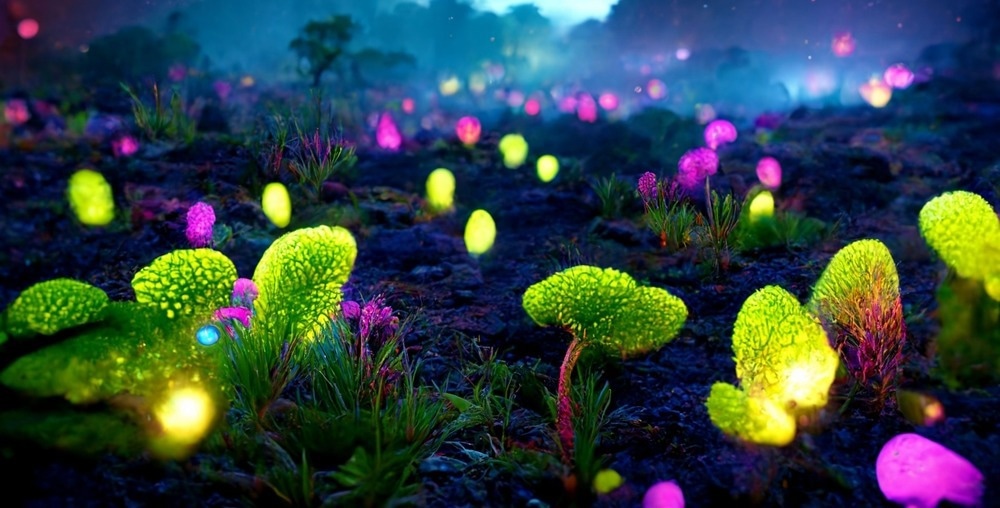Glowing plants may be the future of streetlights, indoor lighting, or even energy production. As a result, researchers have developed several methods to make plants glow, yet issues related to intensity and endurance continue to persist. Nonetheless, recent progress has allowed glowing plants to be switched on or off, to use more widespread enzymes, and to gradually increase intensity.

Fluorescent plants could be the future of lighting. Image Credit: Inkoly/Shutterstock.com
How and Why Should we Create Glow-in-the-Dark Plants?
From phytoplankton to fireflies, many organisms use light through bioluminescence to communicate or attract food. Over recent decades, scientists have also found ways to make other species glow, from rats to fish, by activating green fluorescent proteins (GFPs) derived from jellyfish. However, new applications for bioluminescence have now been developed.
Specifically, scientists are trying to find ways to make glowing plants. This is of interest because plants could serve as indoor and outdoor lights or even act as sources of energy. Lighting accounts for nearly 20% of worldwide energy consumption and addressing this demand for energy could be a significant breakthrough for renewable energy.
Making glowing plants would also allow researchers to study metabolic pathways in plants. Indeed, this would provide insights into fine-scale changes in growth, respiration, and photosynthesis, in response to agricultural practices (e.g., fertilizer usage, tillage strategies, water consumption) and climate change (e.g., drought, storm events, warmer conditions).
Research in nanobionics has recently led to making tobacco plants glow in the dark using genes originating from the mushroom Neonothopanus nambi. Most studies attempting to make plants glow have tried to express bacteria-derived luciferase, which is the light-emitting gene found in many organisms. However, this is a laborious process that can only achieve dim lighting and bacterial luciferase can be toxic to plants.
New approaches have therefore focused on yielding stronger lighting with more cost-effective mechanisms. Using the luciferase enzyme from fungus, which acts in the caffeic acid cycle found in all plants, scientists have now been able to make a healthy and effective way to make plants glow. Making healthy and effective ways to make plants glow could lead to exciting innovations and has become a point of interest for researchers.
Optimizing Mechanisms to Make Plants Glow – Flashlight Plants and Planterns
In recent decades, researchers have found different ways to make plants glow. However, the most efficient strategy has yet to be determined. Nevertheless, the diversity of mechanisms making plants glow has offered many insights into plant functioning.
In 2019, Khattab et al. developed a novel approach to introducing luminescent globe artichoke root. Researchers were able to produce cheap and durable lighting plants that glow like a flashlight helping to replace and save electricity. In order to achieve a flashlight-type glow, the researchers fed plants with strontium aluminate doped with europium and dysprosium, a phosphor.
By using the nutrition system, the researchers were able to avoid any genetic engineering which is sometimes accompanied by negative impacts due to unforeseen genetic interactions. However, genetic engineering does allow cost-efficient and easily implementable systems to make plants glow.
This was the focus of Li et al., who published a review in 2021 discussing the use of biomarkers to transform plants into luminescent systems. The review presents the diversity of biomarkers used to make plants glow and highlights the factors involved in optimizing each system as well as some of the common issues found with glowing plants.
For instance, one of the main recurring problems of developing glowing plants is low luminescent intensity, which hinders the population of so-called “planterns” (plants with engineered biomarkers to glow as ‘lanterns’). Most plants have been altered to emit dimmer luminescence around 1.3 × 106 photons/s, which can be just enough to see in brightness with the naked eye but cannot be used as an energy source. However, more recent efforts have been able to develop plants emitting up to 1.44 × 1012 photons/s, and continued developments are aiming at increasing this intensity.

Could 'planterns' be the future? Image Credit: Minamoto Hitsugaya/Shutterstock.com
The Future of Glow-in-the-Dark Plants
The diversity of glowing plants has increased over time. To date, most have focused on luciferase genes but more recent prototypes include the use of bacterial bioluminescence. Further prototypes have also been able to turn off glowing plants by adding nanoparticles using luciferase inhibitors. This enables plants to shut off light emissions in response to environmental conditions such as sunlight.
The future of glowing plants shows promising trajectories, with paint-on and spray-based nanoparticles that can work by applying them to plant leaves. If this technology is healthy and effective, it could transform trees and other large plants into effective and controllable light sources.
Beyond plants, further efforts have also been aimed at harnessing glowing rare earth materials to diversify the technology of photoluminescence applications. The use of phosphorescent materials has gained mounting interest as developing supplies of energy and light is becoming increasingly valuable.
With the improvement of genetic engineering as well as the development of nanoparticle-based technologies, developing glowing materials is gaining traction across research disciplines. For plants specifically, technologies to develop glowing plants could make plants promising substitutes for artificial light sources in the future.
Sources:
- Khattab, T. A., Gabr, A. M., Mostafa, A. M., & Hamouda, T. (2019). Luminescent plant root: A step toward electricity-free natural lighting plants. Journal of Molecular Structure, 1176, 249–253. https://doi.org/10.1016/j.molstruc.2018.08.101
- Li, B., Chen, R., Zhu, C., & Kong, F. (2021). Glowing plants can light up the night sky? A review. Biotechnology and Bioengineering, 118(10), 3706–3715. https://doi.org/10.1002/bit.27884
- Mitiouchkina, T., Mishin, A. S., Somermeyer, L. G., et al. (2020). Plants with genetically encoded autoluminescence. Nature Biotechnology, 38(8), 944–946. https://doi.org/10.1038/s41587-020-0500-9
- Zhang, H., Baeyens, J., Degrève, J., & Cacères, G. (2013). Concentrated solar power plants: Review and design methodology. Renewable and Sustainable Energy Reviews, 22, 466–481. https://doi.org/10.1016/j.rser.2013.01.032
Further Reading
Last Updated: Sep 26, 2022